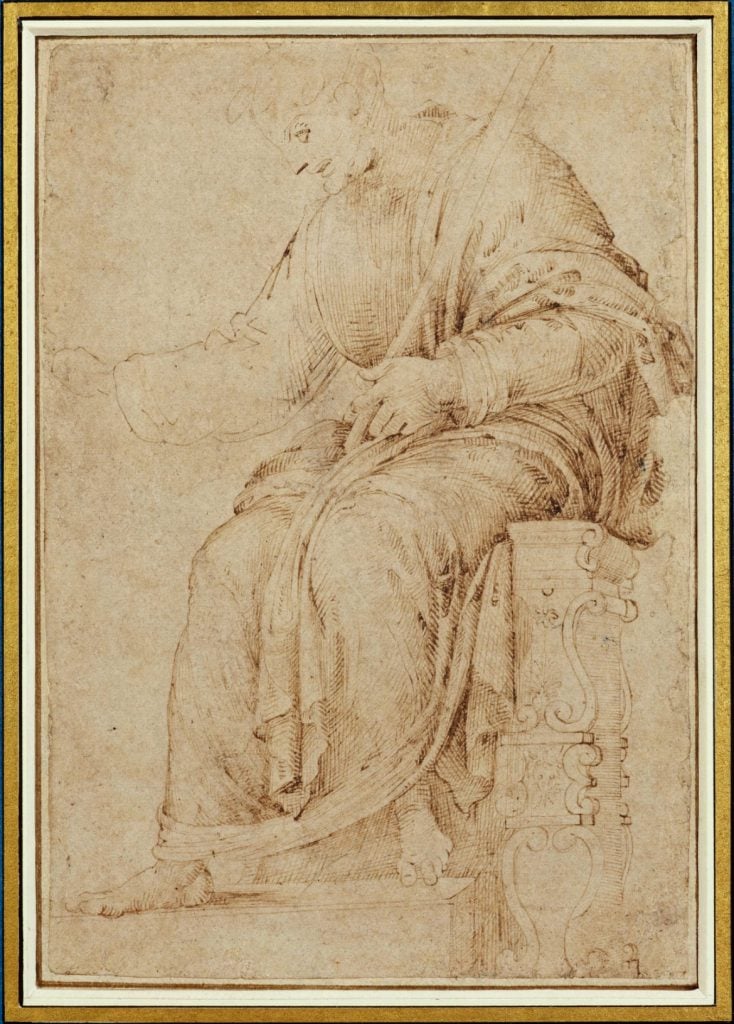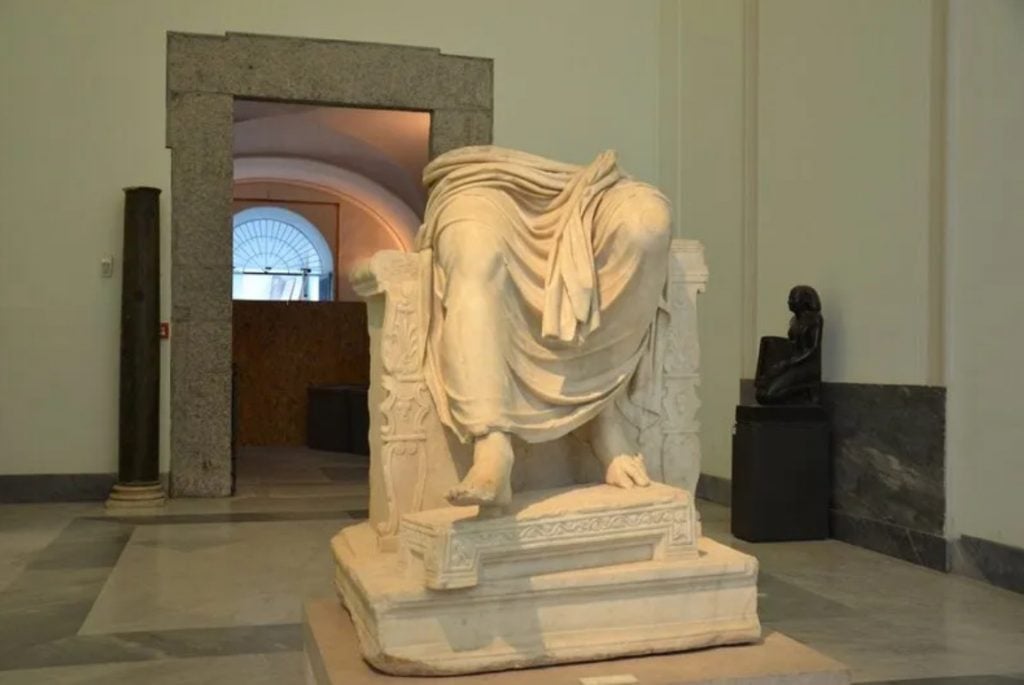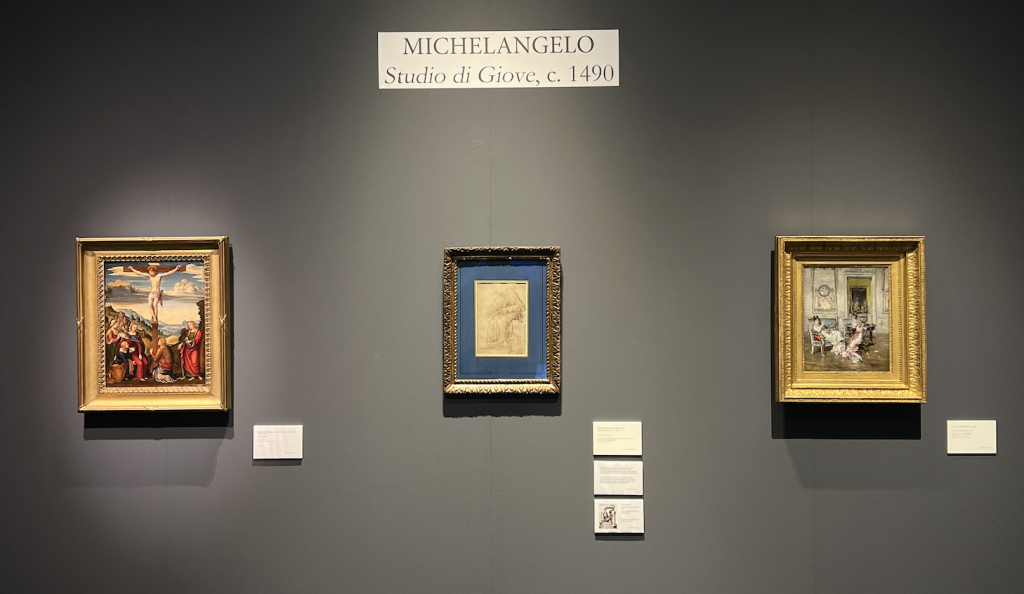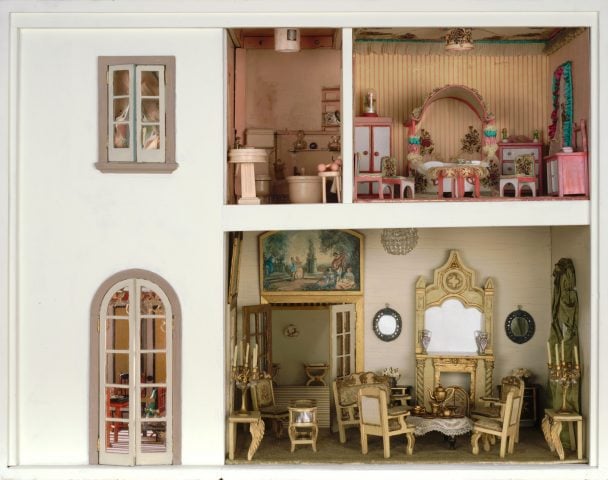Art History
The Earliest Drawing by Michelangelo Just Hit the Market
Five years since experts finally agreed it's a Michelangelo, the sketch is at last up for grabs.

A sketch now considered to be the earliest known drawing by Michelangelo is up for grabs for the first time since its discovery 35 years ago. The drawing’s appearance in a catalog for the Budapest Museum’s 2019 show The Triumph of the Body codified its attribution after decades of debate. Now, London-based Dickinson gallery is offering the piece, titled Study of Jupiter, at Italy’s 33rd Biennale Internazionale dell’Antiquariato di Firenze (International Biennale of Antiques).
When an anonymous British collector bought Study of Jupiter at auction in 1989, it was still unattributed. Former Louvre conservator André Le Plat examined the drawing, which depicts the known marble fragment Jupiter Enthroned (1st–2nd c. CE). Unlike the sculpture, Study of Jupiter portrays the god with a torso, effortlessly blending reality with its artist’s imagination.
The British Museum’s Nicholas Turner initially attributed the drawing to Michelangelo’s teacher Ghirlandaio, because Ghirlandaio’s distinctive tear-drop folds appear in Jupiter’s robe. Drawing marbles from life was trendy in the 15th century, and Ghirlandaio could’ve easily traveled to Rome, where Jupiter Enthroned was on view. Discrepancies between the study and the marble, however (like the position of Jupiter’s left foot) led experts to believe this drawing was done from another drawing—not life. They began attributing it to a pupil of Ghirlandaio. One such student, Fra Bartolommeo, was floated and subsequently shot down.

Jupiter Enthroned, on view in the National Archaeological Museum, Naples. Courtesy of Dickinson.
Experts can’t dust Renaissance drawings for fingerprints. Attributions rely on research, and retain uncertainty. More recently, William and Mary professor Mike Chappel introduced Michelangelo into the conversation. After cataloging the Old Master’s drawings across several institutions, including the Louvre, Cambridge professor Paul Joannides concurred. In 2019, British art historian Sir Timothy Clifford told the Daily Mail, “No other Ghirlandaio pupil draws like that.”
The subject, materials, and accents defining this drawing all appear to match Michelangelo’s early style. For example, Michelangelo notably sketched with two tones of brown ink, which Study of Jupiter displays, to create more depth.
Ghirlandaio’s drawing of Jupiter Enthroned could have easily reached Michelangelo, who started working at his studio in 1487, at age 12. Michelangelo became an apprentice in 1488, and left in 1490. Therefore, it tracks that Ghirlandaio’s style, fresh in Michelangelo’s mind, would appear here.
Comparative analysis substantiates this story. The Louvre owns the former oldest-known Michelangelo drawing, depicting two figures after Giotto, from 1490 to 1492.
Until Study of Jupiter appeared, this was also the Michelangelo drawing that most resembled Ghirlandaio. What’s more, the Louvre’s example features an ill-formed hand similar to the one in Study of Jupiter. Michelangelo only devoted himself to anatomy later on. In the beginning, he was more interested in monument, mass, and torsos than delicate extremities.

The Dickson booth at BIAF. Courtesy of Dickinson.
Another Michelangelo drawing of a figure after Masaccio—dated 1492 to 1493, and located in Munich—illustrates the development of Michelangelo’s sophisticated crosshatching. Thus, Study of Jupiter offers one more missing link in the story of Michelangelo’s growth.
There are very few surviving Michelangelo drawings. He ordered them burned, to give the illusion that his genius didn’t take work. The last time such a drawing was available, it fetched $21 million—$9 million under its estimate, but enough to render it the most expensive Michelangelo work ever sold. This latest bombshell’s fate is worth watching.





